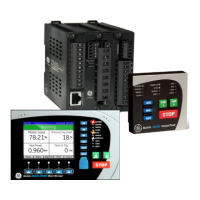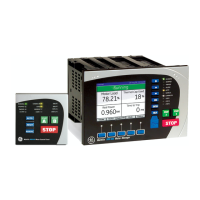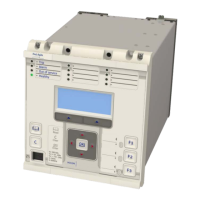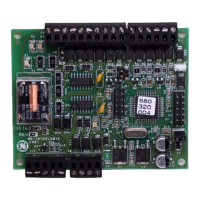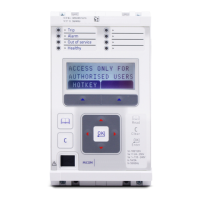Remote Zone 2 Reach = line impedance of Green Valley to Blue River + 50% line impedance from
Green valley to Tiger Bay
= (100 + 40) x 0.484
Ð
79.4° x 0.12
= 8.13
Ð
79.4°
W
secondary
Zone 4 Reach
³
(8.13
Ð
79.4° x 120%) - 5.81
Ð
79.4°
= 3.95
Ð
79.4°
W
secondary
This is the minimum Zone 4 Reach setting, so:
●
Set Z4 Ph. Reach and Z4 Gnd. Reach = 3.96 W
● Set Z4 Ph. Angle and Z4 Gnd. Angle = 80°
7.11.8
LOAD AVOIDANCE
The maximum full load current of the line can be determined from the calculation:
I
FLC
= [(Rated MVAFLC) / (
Ö
3 x Line kV)]
The settings must allow for a level of overloading, typically a maximum current of 120% I
FLC
prevailing on the
system transmission lines. Also, for a double circuit line, during the auto-reclose dead time of fault clearance on
the adjacent circuit, twice this level of current may flow on the healthy line for a short period of time. Therefore the
circuit current loading could be 2.4 x I
FLC
.
With such a heavy load flow, the system voltage may be depressed, typically with phase voltages down to 90% of
Vn nominal.
Allowing for a tolerance in the measuring circuit inputs (line CT error, VT error, protection accuracy, and safety
margin), this results in a load impedance which might be 3 times the expected rating.
To avoid the load, the blinder impedance needs to be set:
Z
£
(Rated phase-ground voltage Vn) / (I
FLC
x 3)
= (115/√3) / (I
FLC
x 3)
Set the V< Blinder voltage threshold at the recommended 70% of Vn = 66.4 x 0.7 = 45 V.
7.11.9
QUADRILATERAL RESISTIVE REACH SETTINGS
If applying Quadrilateral characteristics, as well as the Impedance Reaches, the Resistive Reaches also need to be
considered. The Resistive reaches of the phase-fault elements must be set to cover the maximum expected phase-
to-phase fault resistance. The Resistive reaches of the earth-fault elements should take into account the arc-
resistance and the tower footing resistance.
Phase-Fault Elements
Ideally, the Resistive reach should be set greater than the maximum fault arc resistance for a phase-phase fault
(Ra), calculated in terms of the minimum expected phase-phase fault current, the maximum phase conductor
separation, according to the formula developed by (van) Warrington as:
Ra = (28710 x L)/If x 1.4
where:
● If = Minimum expected phase-phase fault current (A)
● L = Maximum phase conductor separation (m)
Typical figures for Ra are given, for different values of minimum expected phase fault currents, in the following
table:
Chapter 7 - Distance Protection P543i/P545i
204 P54x1i-TM-EN-1
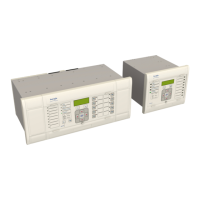
